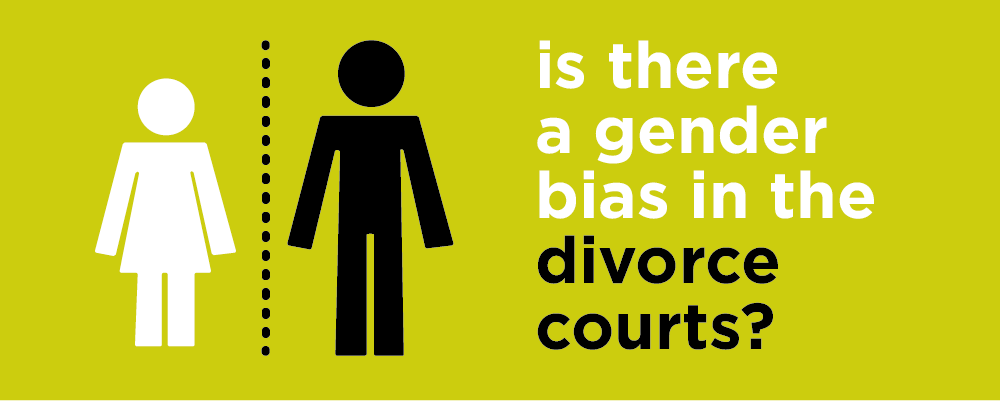- Basildon 01268244144
- Chelmsford 01245453800
- Colchester 01206217300
- London 020 4586 1280

At first glance, the recently decided case of Finch v Baker appears to show a bias in favour of the wife in a divorce case. But is that really the case here?
What was the background to the case?
Ms Finch (the wife) was a highflying TV executive working for the BBC and 12 years younger than Mr Baker (the husband) a retired journalist. They were together for 21/22 years and had two children who arrived towards the end of the marriage and who were infants when the parties separated. The case did not come before the court until about 6 or 7 years post separation.
What were the assets the court needed to look at?
The husband was retired on a state pension. The wife was earning £160,000 a year. She was looking after the children. The jointly owned properties that the couple owned had a combined net worth of just over £2m and the wife had a very substantial pension with the BBC worth, again, just over £2m.
What might the parties have expected from the court?
There is a conventional wisdom that the starting point in a long marriage is an equal division of the assets including the pension assets. On that basis, both parties would have had about £1m of capital and about £1m of pension fund. The wife would have continued to work for a few more years before she was able to retire as well. That seems like a relatively simple calculation for the court to make.
But what actually happened?
The trial judge awarded the husband approximately 40% of the capital assets and half the pension. However, because he had debt and the wife had other assets, the total split of all the available assets and debt meant that the wife ended up with nearer a 70/30 split. She then appealed saying that the husband had been given too much both in capital and in pensions and that because of his conduct during the marriage, and his lack of contribution (described as a ‘negative contribution’) he should have had much less.
What did the first appeal achieve?
The husband accepted that he could manage with a bit less capital and less pension. The appeal judge dismissed the wife’s suggestion that conduct or contributions was in any way relevant and made an order which effectively reduced the husband’s share to 25% of the capital assets and just over a third of the pension. The judge thought that the relevant factors the court should take into account were that:-
- The wife would have a long-term financial responsibility for the children who were still infants at the time of separation; and
- Because it had taken so long for the case to get to court, the wife’s pension had continued to accrue and there was a good argument, particularly bearing in mind her age as well, for there to be a disparity in the pension sharing as a result. The judge appeared to base the pension sharing on the amount that it was likely to produce for the husband.
What happened next?
The wife was still unhappy and so she appealed again and the case came before the Court of Appeal. The wife claimed that the pension report was out of date and a further look at pensions was necessary. The percentage given to the husband would produce an annual amount greater than he had been prepared to accept. She also tried to raise conduct and contributions again, an attempt with which the Court of Appeal had no patience and dismissed out of hand.
The Court of Appeal made the point that pension sharing orders must be based on percentages. Therefore, it has always been clear to everyone that it is impossible to predict with absolute certainty how much annual pension a pension sharing order might produce. This is given the fact that there is always a time lapse between when an order is made and when the pension sharing is actually carried into effect. The Court of Appeal took the view that that was just a fact of life that the parties would have to live with.
So is there a gender bias here?
It seems to me that a departure from equality was justified for the following reasons:-
- The wife had a long-term financial responsibility for the children;
- She was 12 years younger than the husband;
- A significant part of her pension had arisen post separation;
- The husband had himself agreed to accept a reduced amount of capital and pension on the first appeal.
I do wonder what might have happened had the husband not made those concessions. On the face of it, the parties’ needs would have both been met with an equal division of the capital and it would have been impossible for the wife to claim that with an asset of £1m she couldn’t house herself and the children in a very comfortable manner. Because of the husband’s concession, the Court of Appeal did not need to consider whether it would have been appropriate to increase the capital share that he received. I think it’s a very arguable point.
The case does demonstrate that subtle differences in the facts of each marriage can produce very different results in court. What I think the court does emphasise is how unwilling judges are to consider allegations of conduct over many years of a marriage and claims that parties have ‘not pulled their weight’ and should be financially penalised as a result.
We are always happy to discuss matters with you and offer a free 15 minute initial telephone call. If you would like to take advantage of that, please call our divorce lawyers.
I can be contacted on 01206 217320 or philip.hoddell@birkettlong.co.uk.



Comments